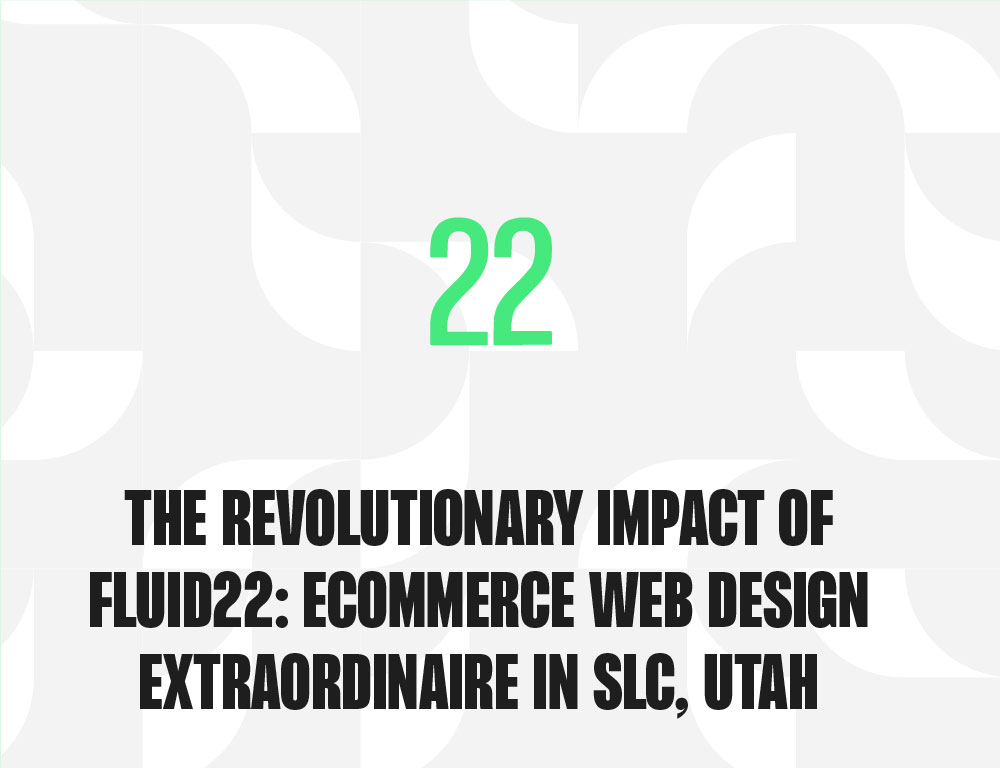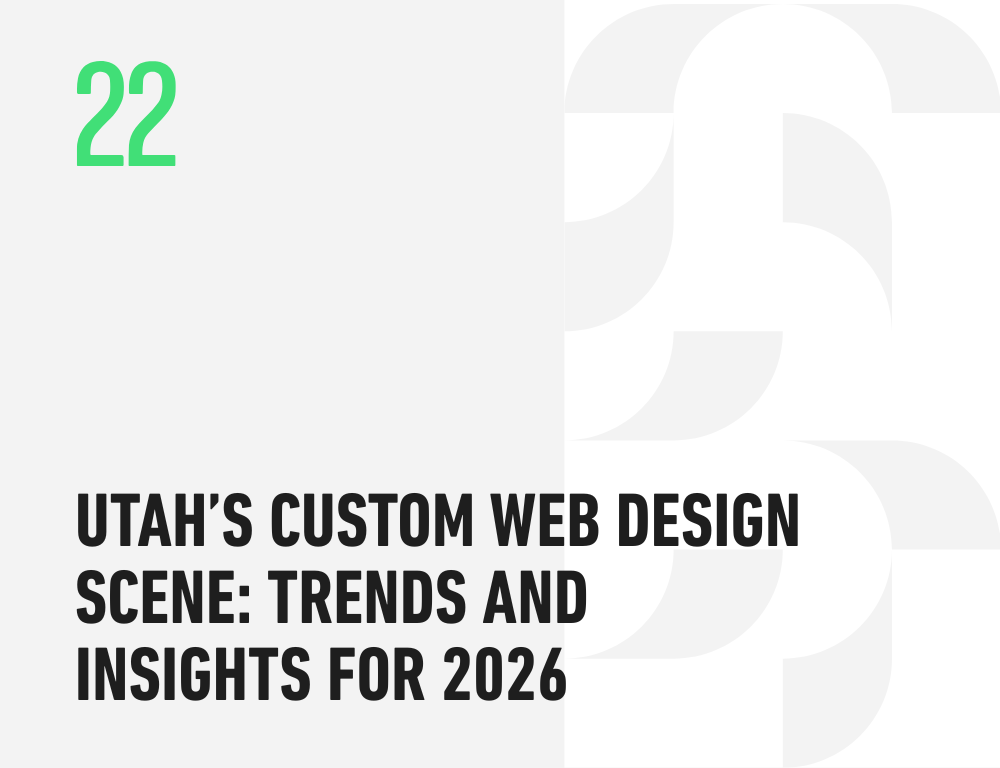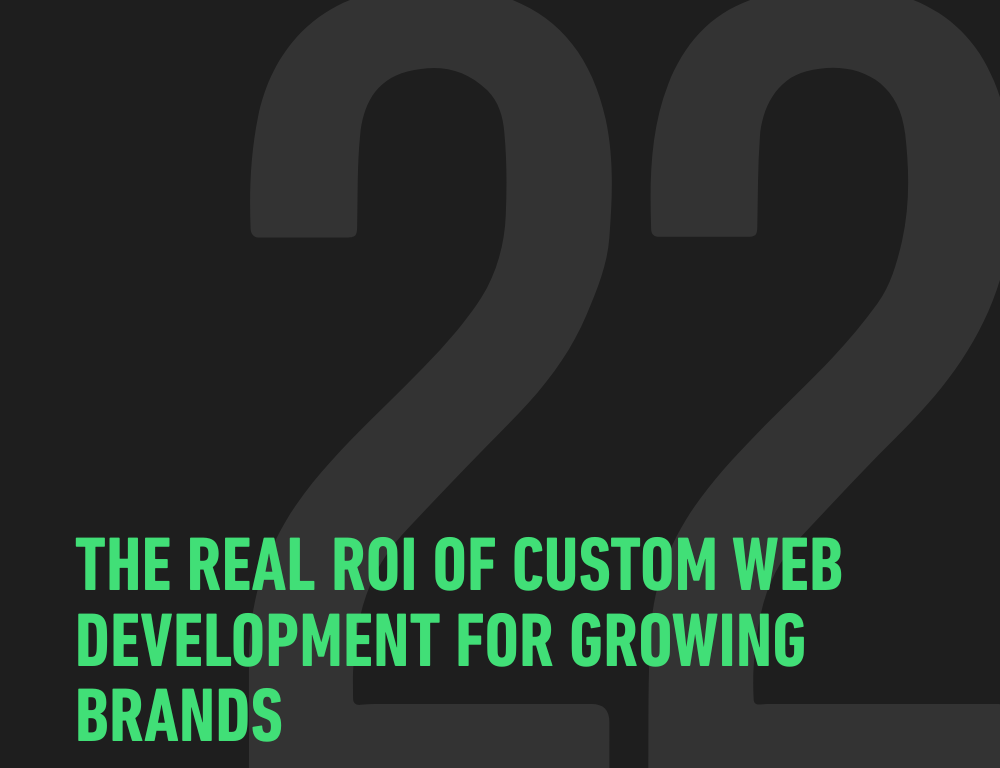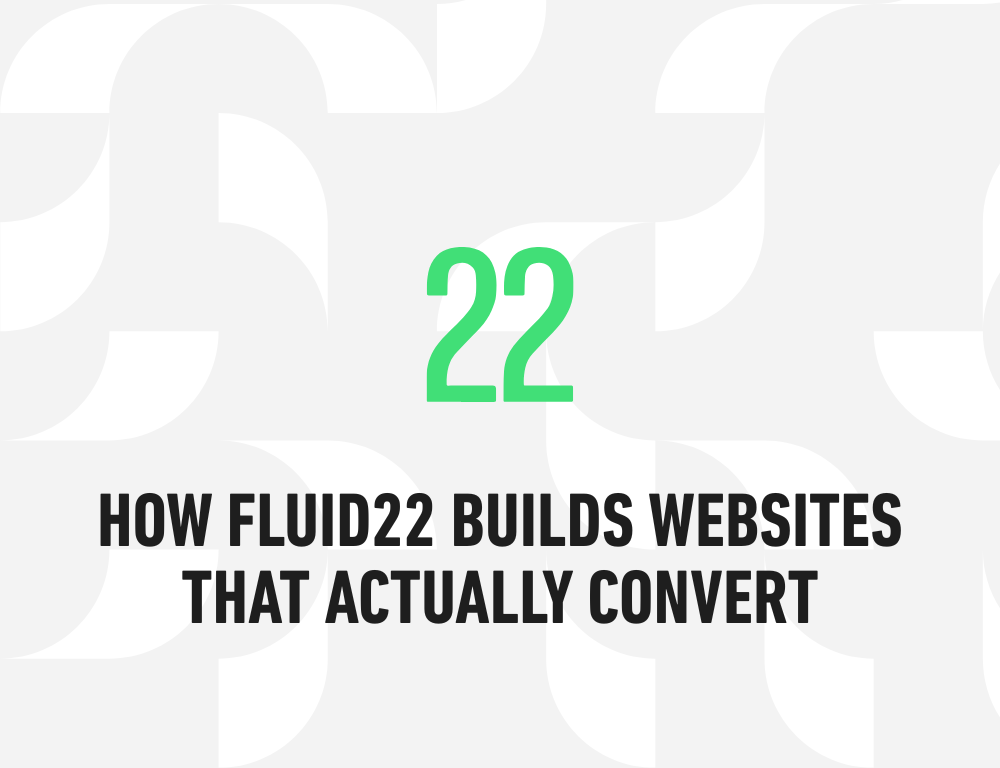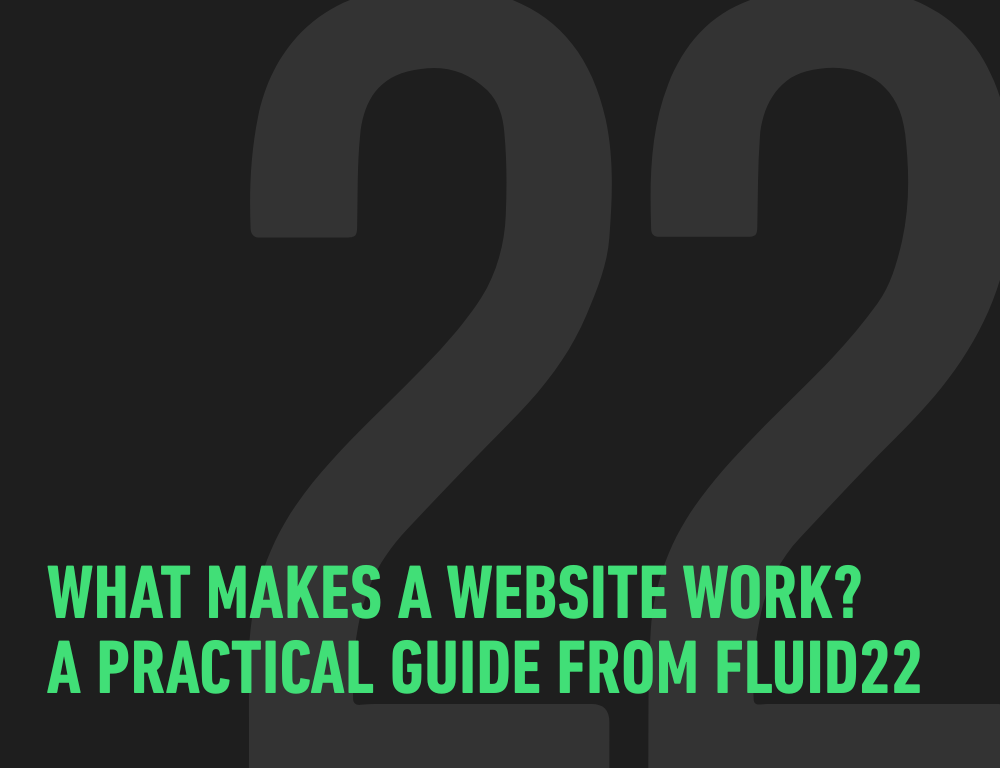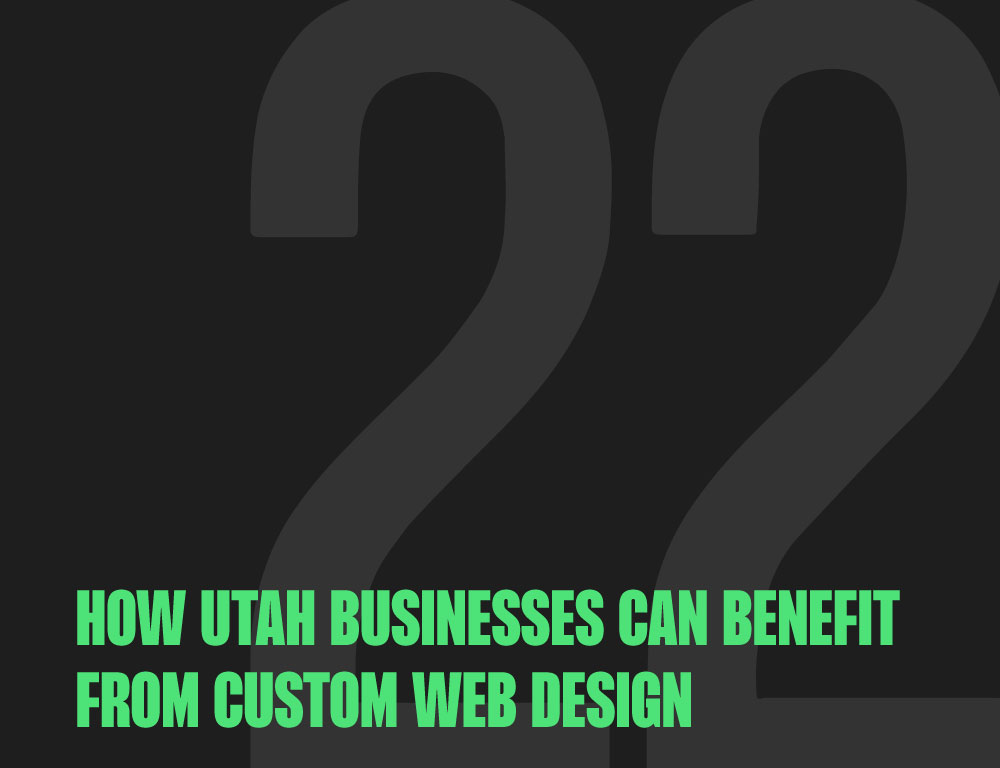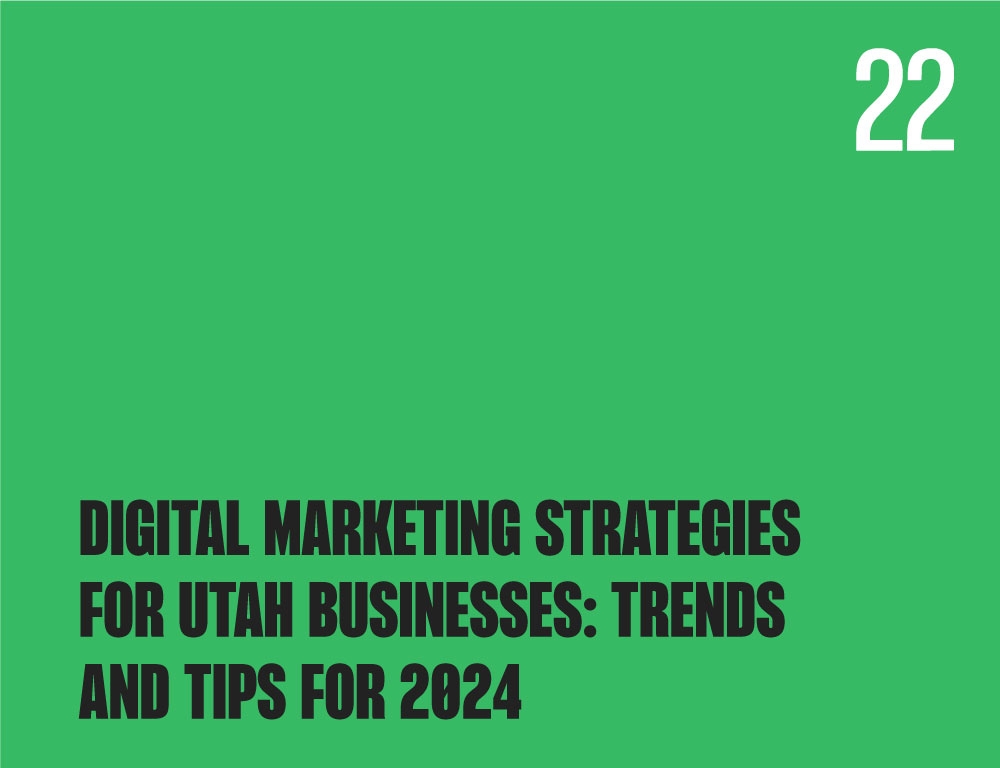Imagine a world where your online store looks stunning and functions seamlessly, turning visitors into loyal customers. That world isn’t a distant dream. It’s a reality crafted by specialists, and one company at the forefront of this revolution is Fluid22, an e-commerce web design maestro in Salt Lake City, Utah.
E-commerce’s Evolution: From Humble Beginnings to Fluid Designs
E-commerce, the behemoth industry that it is today, began as a mere dream. In its early stages, it was a fragile endeavor – the idea of buying something online without physically seeing or touching it was alien to most. Not helping the cause were the clunky interfaces, plain and rigid design structures, and a generally unappealing user experience. Imagine navigating a platform where images took ages to load, descriptions were hard to find, and the checkout process was a puzzle in itself!
The initial days of e-commerce were a mix of excitement and skepticism. For every individual who marveled at the convenience it promised, another questioned its security and practicality. However, these growing pains were not to last forever.
As technology rapidly developed, so did the tools available for website design and user experience. Faster internet speeds meant that images loaded quicker, responsive designs became a standard, and navigation turned intuitive. At the heart of this transformation was a consumer-driven shift. As more people began shopping online, their expectations grew. They demanded more from online platforms – better visuals, smoother transactions, personalized experiences, etc.
It was during this tumultuous yet transformative period that Fluid22 emerged as a game-changer.
Spotting the gaps and challenges in the e-commerce industry, Fluid22 wasn’t just another company jumping on the bandwagon. They approached the arena with a vision – revolutionizing how we perceive and experience online shopping. Where most saw problems, they saw opportunities. The company’s modus operandi was clear: to create designs that were not only visually appealing but also user-centric. They understood that e-commerce was about selling a product and creating an experience.
Fluid22’s innovative designs were refreshing in an industry that was once dominated by cookie-cutter templates. They brought in dynamic layouts, interactive elements, and, most importantly, a sense of fluidity to the browsing experience. Their solutions resonated with both businesses and consumers alike. For businesses, it meant better engagement and higher conversion rates. For consumers, it translated to a seamless, enjoyable shopping experience.
In essence, Fluid22’s rise to prominence is a testament to the importance of adaptive innovation. In the ever-evolving landscape of e-commerce, staying stagnant is not an option. Companies that recognize market needs, like Fluid22, and act upon them are the ones that don’t just survive but thrive.
Today, as we stand at the cusp of another technological revolution, with virtual reality, augmented reality, and AI-driven platforms becoming more mainstream, it’s exciting to see how pioneers like Fluid22 will shape the next phase of e-commerce. One thing’s for sure – the journey of e-commerce, from its rudimentary beginnings to fluid designs, is a compelling story of evolution, resilience, and innovation.
Why Fluid22 Stands Out
- Tailored Designs: Unlike generic templates, Fluid22 believes in understanding a brand’s essence and translating that into a unique and captivating web design.
- User Experience (UX) Mastery: Recognizing that a good design isn’t just about aesthetics, they prioritize user journeys, ensuring that every click leads to a satisfied customer.
- Local Insights: Being based in Salt Lake City, Utah, Fluid22 taps into local market insights, ensuring designs resonate with the target audience.
- Incorporating Feedback: Continuous improvement is key. Fluid22 places a premium on client and user feedback, ensuring designs evolve and stay relevant.
Expert Opinions
“Fluid22’s innovative approach to eCommerce design has set new standards. Their dedication to understanding brand ethos and transferring it to web design is commendable.” – Jane, Senior Web Analyst.
Optimizing Your E-commerce Store: A Comprehensive Guide
In today’s bustling online marketplace, standing out is no longer just about offering unique products or competitive prices; it’s about delivering an unmatched user experience. The usability and efficiency of your e-commerce platform can be the defining factors in a visitor’s decision to make a purchase or abandon the cart. Let’s delve deeper into the highlighted tips and add a few more to ensure your e-commerce store is optimized to its fullest potential.
- Engaging Visuals:
- High-Quality Images: Ensure product images are clear, high-resolution, and depict the item from multiple angles. Allow users to zoom in to see intricate details.
- Videos: Product videos can be a game-changer. They provide a comprehensive view and can showcase the product in use, helping the customer visualize its practicality.
- Consistent Aesthetics: Maintain a consistent visual theme throughout the site, aligning with your brand’s voice and ethos.
- Simplified Navigation:
- Intuitive Layout: Organize products into clear, logical categories and subcategories. Implement a breadcrumb trail to help users understand their navigation path.
- Search Functionality: Incorporate an efficient search bar with auto-suggestions, filters, and sorting options to help users find products faster.
- Clear CTAs: Call-to-Action buttons, like ‘Add to Cart’ or ‘Buy Now’, should be prominently displayed and easily identified.
- Mobile Optimization:
- Responsive Design: Ensure your website design adjusts seamlessly across devices – a desktop, tablet, or smartphone.
- Touch-Friendly: Buttons and links should be adequately spaced and easily tapable on touchscreen devices.
- Quick Load Times: Mobile users often have less patience for loading delays, so optimize images and scripts to ensure speedy page loads.
- Enhanced User Experience:
- Fast Checkout Process: Minimize the number of steps required to complete a purchase. Offer guest checkout options for those who don’t wish to register.
- Personalization: Use algorithms to showcase personalized product recommendations based on browsing history or previous purchases.
- Live Chat Support: Incorporate live chat options to answer queries in real-time, enhancing user trust and increasing conversion chances.
- SEO Optimization:
- Keyword Integration: Ensure product descriptions, meta tags, and URLs incorporate relevant keywords to improve search engine visibility.
- Quality Content: Regularly update your site with valuable content, such as blogs, to boost SEO and position your brand as an industry authority.
- Optimize Image Alt Text: Ensure every image has an alt text that describes the image, aiding in search engine indexing.
- Trust-Building Elements:
- Secure Payment Gateways: Display security badges to assure customers that their payment information is safe.
- Customer Reviews: Allow customers to leave reviews and ratings. Positive testimonials build trust and can significantly influence purchasing decisions.
- Transparent Policies: Clearly outline return, shipping, and privacy policies to set clear expectations and reduce post-purchase dissonance.
In conclusion, optimizing an e-commerce store is a multifaceted endeavor that requires a blend of aesthetics, functionality, and user-centric design. Regularly reviewing and updating your platform based on user feedback and technological advancements can ensure you stay ahead in the competitive e-commerce landscape.
The Great E-commerce Design Debate: Templates vs. Specialized Design
In today’s digital age, e-commerce is not just a luxury; it’s a necessity for businesses, big or small. With platforms sprouting left, right, and center, offering many ready-to-use templates, some might wonder: Why invest in specialized e-commerce design? Why not just pick a template, plug in your products, and get started?
Templates: The Quick Fix Solution
At first glance, templates seem to offer the perfect solution. They’re readily available, relatively cheap, and can quickly get your e-commerce site up and running. Templates are a godsend for startups with limited budgets or businesses needing a quick online presence. They come with preset layouts, stock images, and standardized features that cover the basics of e-commerce functionality.
But herein lies the problem: the word “standardized.”
The Drawbacks of a One-Size-Fits-All Approach
When you opt for a template, you choose a one-size-fits-all design. And in the world of e-commerce, where differentiation is key, this can be a significant setback. Here’s why:
- Lack of Personalization: A template, by design, is meant for mass use. While you can tweak certain elements like colors or fonts, the overall structure and flow remain the same. This means your website ends up looking and feeling like countless others.
- Limited Scalability: As your business grows, your needs evolve. Templates might not be flexible enough to accommodate these changes, leading to functionality issues or the need for frequent platform shifts.
- Optimization Concerns: Templates are designed with a broad audience in mind, not specifically for your target audience or niche. This can lead to missed opportunities in terms of SEO, user experience, and conversion rate optimization.
Specialized Design: The Fluid22 Advantage
Enter specialized e-commerce design, championed by experts like Fluid22.
- Tailored Solutions: Specialists deeply understand a brand’s ethos, target audience, and business goals. This ensures the design is visually appealing and resonates with the intended audience.
- Optimized Performance: A specialized design is built from the ground up with optimization in mind. Be it for search engines, mobile responsiveness, or user navigation, every aspect is fine-tuned.
- Future-Proofing: With a specialized design, scalability is a given. Whether you’re adding new product lines or integrating advanced features, the platform can adapt without hiccups.
- Consistent Branding: Beyond functionality, a specialized design ensures that the website mirrors the brand’s voice, tone, and ethos, offering a consistent brand experience to users.
While templates undoubtedly serve a purpose and cater to a market segment, they are not a replacement for specialized design. In the competitive world of e-commerce, where the minutest details can sway purchase decisions, the personal touch, optimization, and forward-thinking approach that specialists like Fluid22 offer can make all the difference. After all, in the race to stand out and create memorable user experiences, a bespoke design has an edge that templates cannot match.
Fluid22 and the Ever-evolving E-commerce Landscape
The digital realm, particularly e-commerce, is analogous to a vast ocean, with tides that change direction occasionally. While setting sail is an achievement in itself, navigating through these shifting waters requires constant vigilance, adaptability, and foresight. That’s where a seasoned navigator like Fluid22 proves invaluable.
Continued Partnership with Fluid22
The partnership with Fluid22 isn’t a short-lived affair. It’s not about getting a website designed and then parting ways. E-commerce, being the dynamic entity that it is, demands continuous attention. Algorithms change, consumer behaviors shift, and technological advancements introduce new possibilities – and amidst all these changes, businesses need to recalibrate their strategies.
Fluid22 understands this need for adaptability. They’re not just designers; they’re strategic partners who walk alongside businesses, ensuring that their online presence isn’t just maintained, but optimized with the latest trends and technologies.
Elevate Your E-commerce Game in Salt Lake City, Utah, and Beyond
With its burgeoning tech scene and entrepreneurial spirit, Salt Lake City has seen a surge in online businesses. While this means great opportunities, it also translates to increased competition. Now, more than ever, Salt Lake City-based businesses need to ensure that their online stores don’t just blend into the digital crowd but stand out.
But Fluid22’s prowess isn’t geographically limited. Whether you’re nestled in the heart of Utah or operating from a remote corner of the globe, their expertise is accessible and applicable. They bring a universal understanding of e-commerce trends, married with the capability to tailor solutions to specific regional needs.
What Fluid22 Brings to the Table
- Customized Design Solutions: Beyond aesthetics, Fluid22 crafts online experiences. They understand that every business is unique, and their design approach reflects this individuality.
- Data-Driven Strategies: In the digital age, decisions backed by data are the ones that drive success. Fluid22 integrates analytics and insights into their solutions, ensuring that businesses make informed choices.
- Future-Forward Approach: E-commerce trends are not static. Fluid22 stays abreast of the latest innovations, be it in the realms of AR/VR, AI-driven customer service, or next-gen payment gateways, ensuring that businesses are always a step ahead.
- End-to-End Services: From ideation and design to deployment and continuous support, Fluid22 offers a comprehensive suite of e-commerce services.
The Missing Piece in Your E-commerce Puzzle
The journey in the digital marketplace is filled with challenges and opportunities. While many pieces must come together to create a successful e-commerce enterprise, having a seasoned partner like Fluid22 can be the linchpin. As you aspire to expand your horizons, scale new heights, and craft memorable online experiences, consider diving deep into the world of Fluid22. Their expertise might be the catalyst that propels your business into the e-commerce stratosphere.
Engage, explore, and excel with Fluid22
